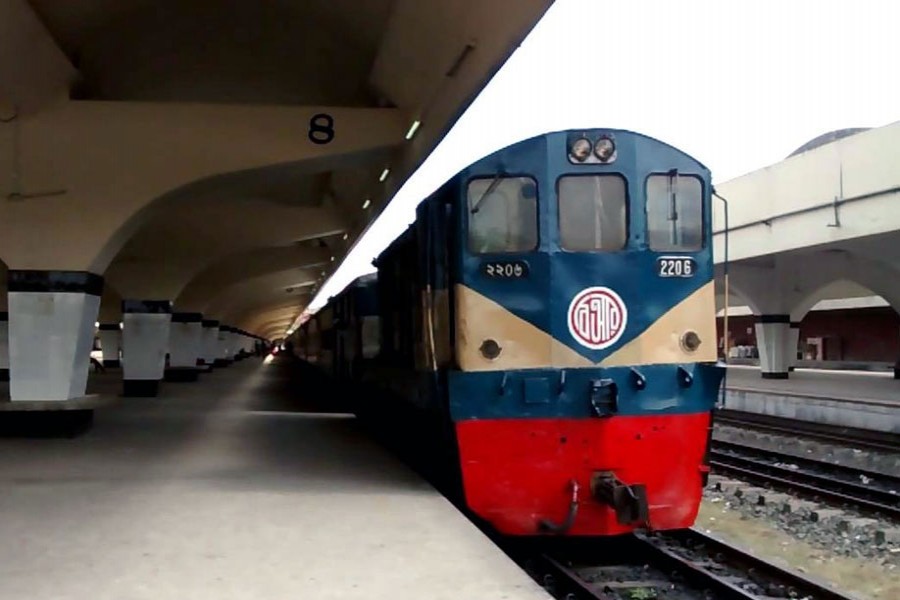It's a good piece of news that the ministry of railways has taken some steps to repair the risky railway bridges, culverts and tracks across the country. A countrywide structural survey is being taken up to identify rail and road bridges and culverts requiring repair and urgent maintenance.
Field level activities have been strengthened to keep the railways safe and usable following the recent Kulaura train accident. If negligence is found in keeping the rail tracks safe, strong actions will be taken against concerned officials, the government has warned.
The government is reported to have taken a project to operate speedy trains. Apart from this, it is expected to launch new railway tracts every year. However, amid government's multiple initiatives to modernise the country's railway sector, many railway tracks across the country have been found not in good condition. The condition of slippers in many parts is also vulnerable. Besides, the stones that keep the slippers on point are not adequate in many parts of rail tracks. Many rail bridges are frail as 90 per cent of them were built during the British rule. The trains of many routes cross these bridges amid risks of serious accidents. More than 1200 kilometres (km) of rail lines were found to be risky for operation due to lack of proper maintenance over the years.
Critics often complain of widespread corruption, misuse of public money and wrong policy that made the state-run railway a losing concern. The local road transport syndicate and international automobile manufacturers' lobby are also blamed to jointly and deliberately destroy the railway for their own interest.
The railway is viewed as the safest, cheapest and environment-friendly mode of transportation. While the BR continued to suffer losses since its inception, it had always put the burden of losses on passengers. But in reality, it is incurring losses due to corruption and misuse of public money. There is corruption in railway's locomotive and carriage purchase, appointments in vacant posts and in the process of recovering its lands grabbed by unauthorised individuals and quarters.
Since the liberation of the country, big chunks of development budget were allocated to roads and highways sector. The railway sector was out of the limelight and it has never got proper patronage of the government. For unknown reasons, instead of constructing new rail-routes, some of the branch line railway sections were declared redundant and subsequently closed. Besides, one of the major problems presently being faced by the BR is serious shortage of locomotives and route capacity.
Things, hopefully, have started to change in recent times. It appears bad days for the BR are coming to an end. In addition to the development works, the government is reportedly planning to reopen most of the 27 closed rail stations within a year.
It is a new challenge for the BR to eliminate a number of structural and physical weaknesses it had inherited as part of its legacy, since it was never designed and constructed to serve the modern-day communication needs.
There has to be a vision for developing the railway as a fast and efficient mode of transportation. This country does not need to go for super fast train service because of its geographic limitations. However, it should at least aspire for developing the railway with electricity-driven trains.
With better management efficiency, it is possible to remove all odds facing the railway. The railway should be made a cheap and affordable mode of transportation. With better human resources management, the BR may be expected to come back to life.


